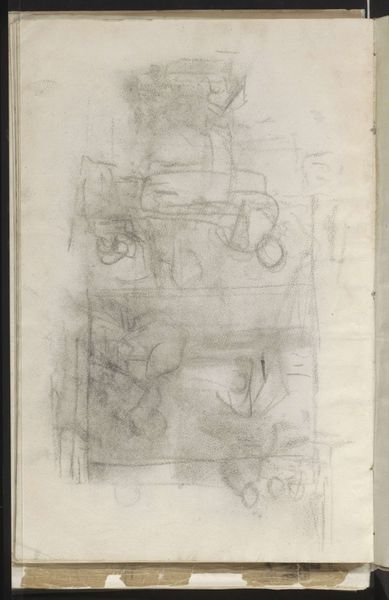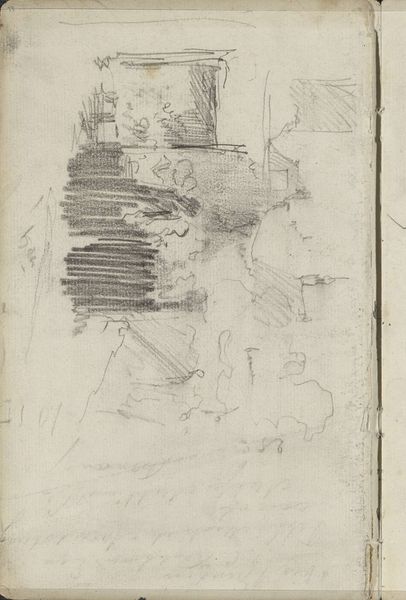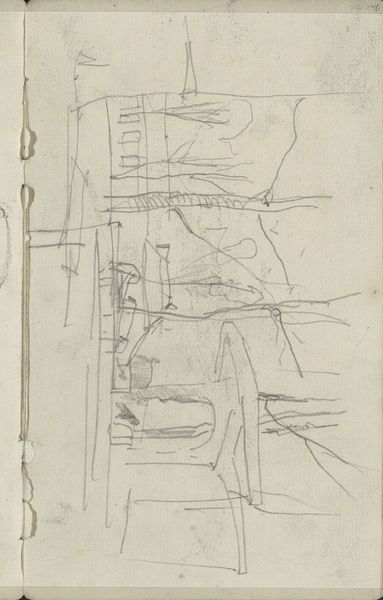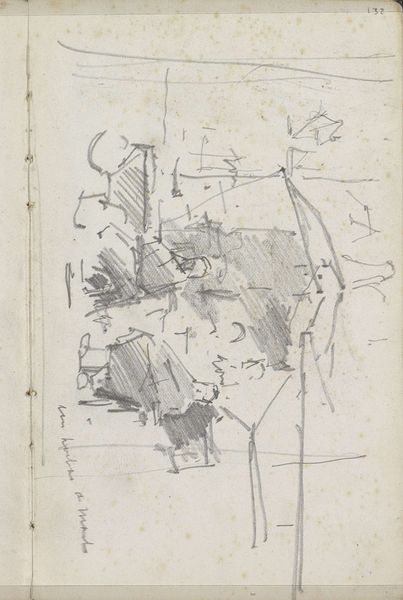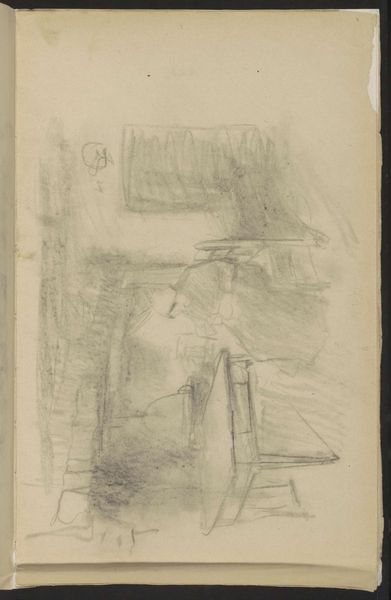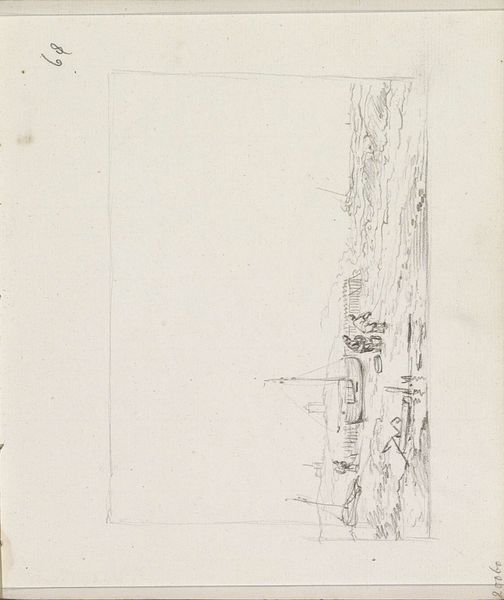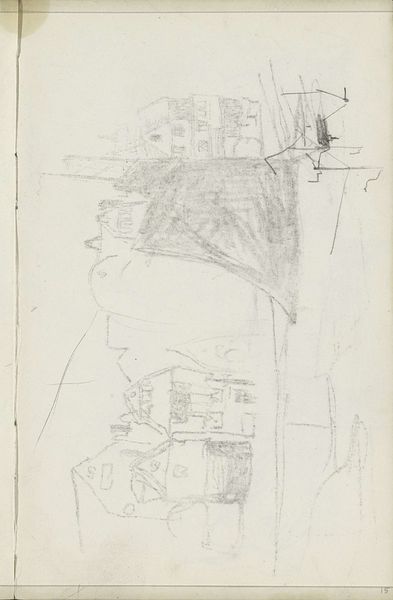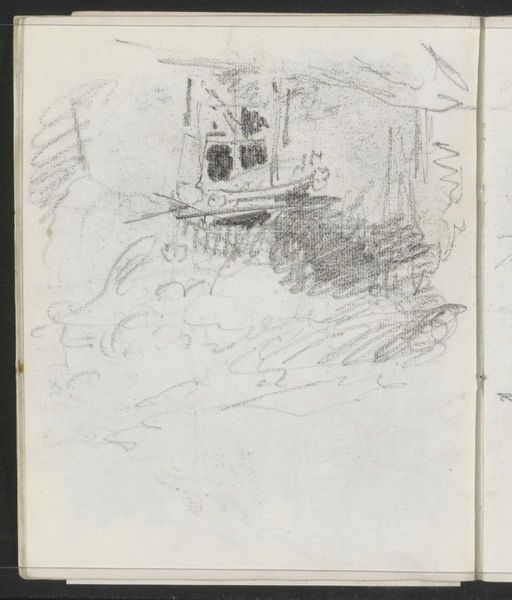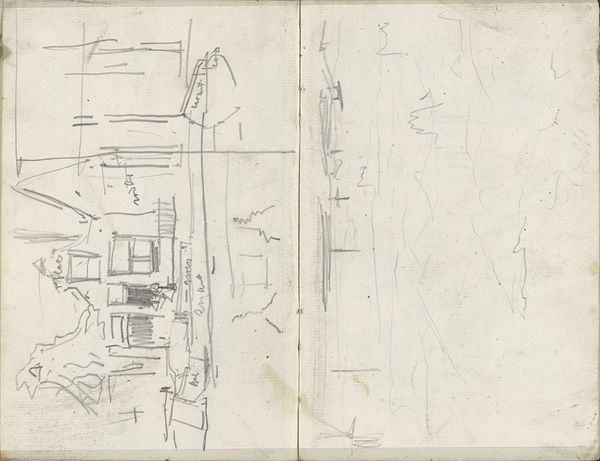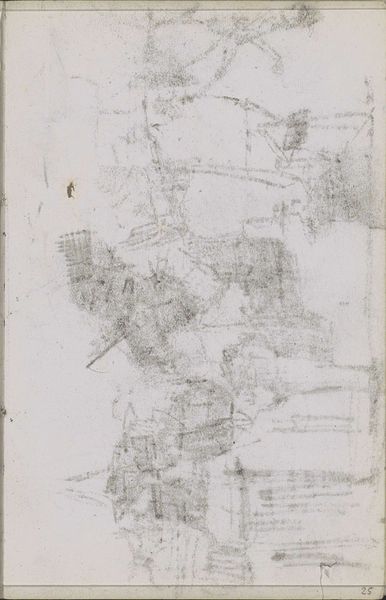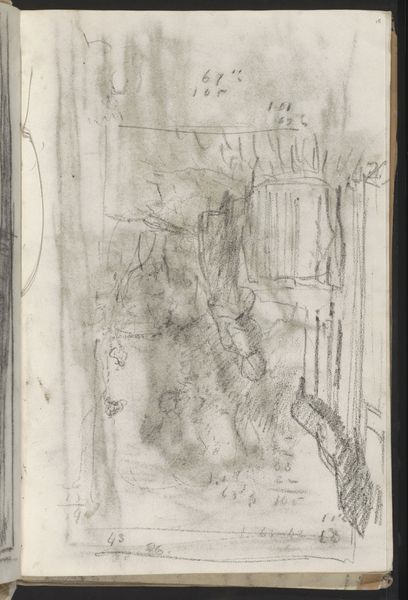
drawing, paper, pencil
#
portrait
#
drawing
#
paper
#
pencil
#
genre-painting
#
realism
Copyright: Rijks Museum: Open Domain
Curator: Welcome. We’re standing before Albert Neuhuys' "Interieur met een zittende figuur bij een venster," likely created between 1854 and 1914. It's a pencil drawing on paper. Editor: My first impression is…melancholy. The muted tones and the almost ghostly presence of the figure evoke a sense of quiet solitude. The window, though present, doesn't offer much light or view; it's rather claustrophobic. Curator: That feeling of enclosure resonates with the era's social constraints. Consider the expectations placed upon women of the time. This could depict their limited sphere, their lives often confined to domestic interiors, observing the world through windows but rarely participating directly. Editor: I see your point, but the artist’s technique adds to this. The drawing is unfinished; there are erased lines everywhere. Look at how the hatching builds form. It isn’t polished, instead the rough marks intensify the feeling of transience. Curator: Indeed. Neuhuys often depicted scenes of rural life, emphasizing the hardships faced by the common folk. He rose to fame during a period when artists aimed to portray the reality of everyday existence, shifting away from romanticized idealism. His choice of a humble interior further aligns with that ethos. It emphasizes their role in nation-building, while hinting at struggles with the status quo of industrializing Dutch society. Editor: There is beauty even within realism. Notice the subtle contrast between the heavy shadows on one side of the window and lighter area by the figure's face, indicating source of light, an atmospheric effect amidst the seemingly stark representation of an everyday interior scene. This attention detail balances overall feeling. Curator: Exactly, such scenes contributed significantly during period defining “Dutchness”. By documenting homes rural citizens offered alternative identity against fast pacing transformations urbanization period Editor: Thanks to both his aesthetic sensitivity and sociopolitical vision, the artist made me reconsider my preconceived ideas. Curator: Mine too!
Comments
No comments
Be the first to comment and join the conversation on the ultimate creative platform.
